Household power costs: November prices, steep rise in winter power bills on its way

ju_see // Shutterstock
Household power costs: November prices, steep rise in winter power bills on its way
A cup of coffee on a home window showing peak winter season.
As November settles in, temperatures drop, and—surprise—power bills are about to go up. The average U.S. electricity price hovers around 16.8 cents per kilowatt-hour (kWh), but there’s huge variation. Rates range from 33 cents per kWh in California to a low of 11.8 cents in Louisiana. Knowing your local rate could save you from winter sticker shock, so Arbor shares the lowdown on November prices, what’s coming in December and January, and tips to keep your costs down.
Current Electricity Costs
What’s behind these rates and how are they set? Here’s a quick rundown: Electricity rates are the price paid per kilowatt-hour (kWh) of electricity used. The rate is influenced by multiple factors: demand (which skyrockets when it’s hot or cold), the cost of producing or buying electricity, and whether a state is regulated (where utilities set rates) or deregulated (where customers can shop for better rates).
Right now, the average U.S. price is around 16.8 cents per kWh, but there’s huge variation—from 33 cents per kWh in California to just under 12 cents in Louisiana. Meanwhile, states like Washington and Louisiana keep prices low, with rates under 10 cents per kWh. While these states have seen small price hikes, they’re still way more affordable for winter energy use. Knowing the local rate can be a game changer for managing the winter energy bill.
![]()
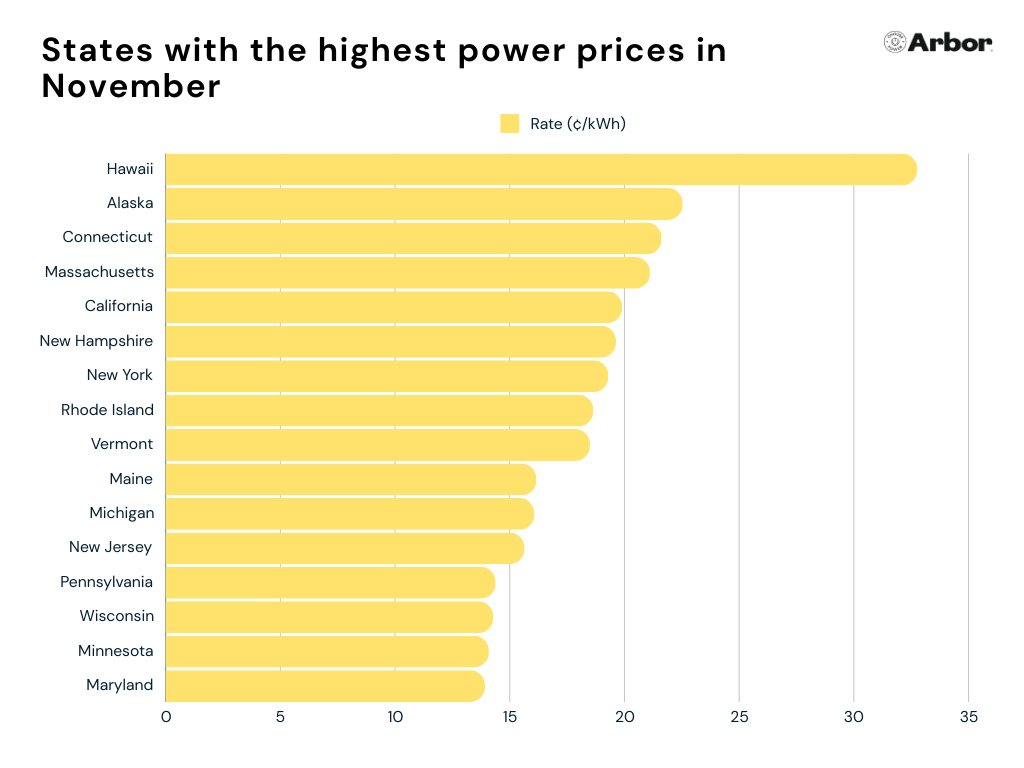
Arbor
High-Cost States Feel the Burn as Electricity Rates Climb
Chart showing states with highest power prices in November.
Electricity prices aren’t the same everywhere, and those in a high-cost state are likely feeling the pinch already. Hawaii has the highest rate, currently 32.76 cents per kWh (ouch), up from 30.45 cents a year ago. Alaska, Connecticut, and Massachusetts are also high on the list, with California close behind.
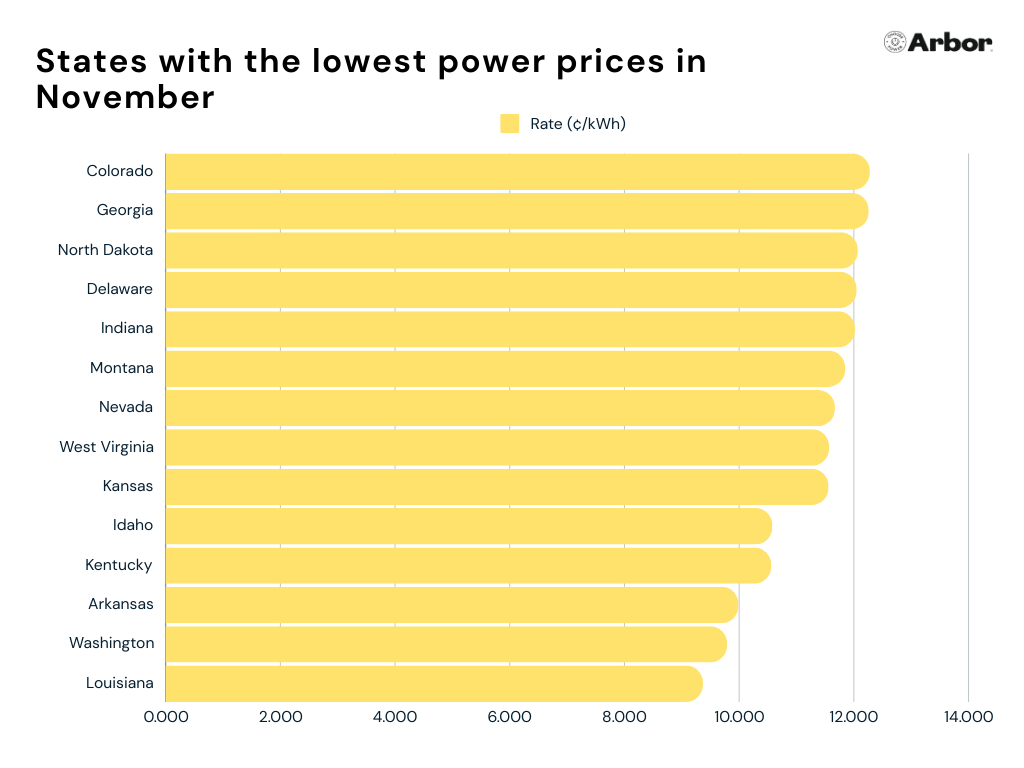
Arbor
U.S. Electricity Prices Continue to Surge Nationwide
Chart showing states with lowest power prices in November.
These rates have also all gone up since this time last year, showing an ongoing rise in U.S. electricity prices.
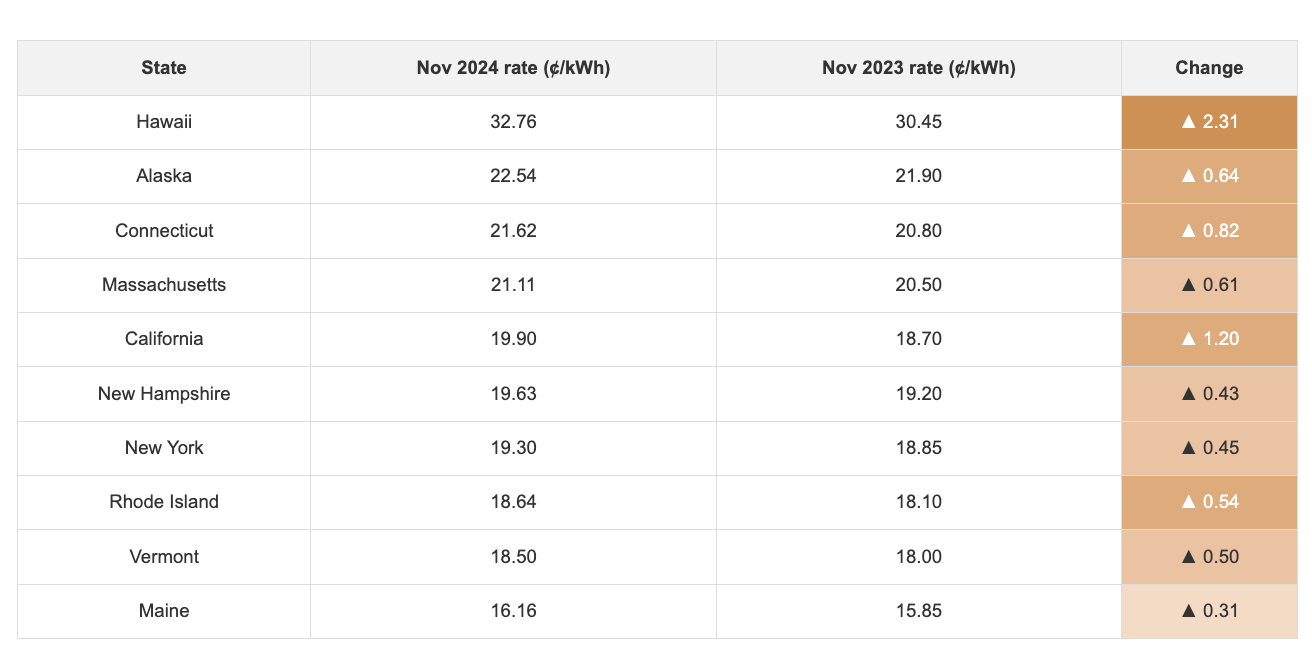
Arbor
The Sharpest Electricity Rate Hikes Across the U.S.
Table showing biggest change in rates since last year.
Here’s a quick look at some of the biggest lifts in rates across the country since last November.
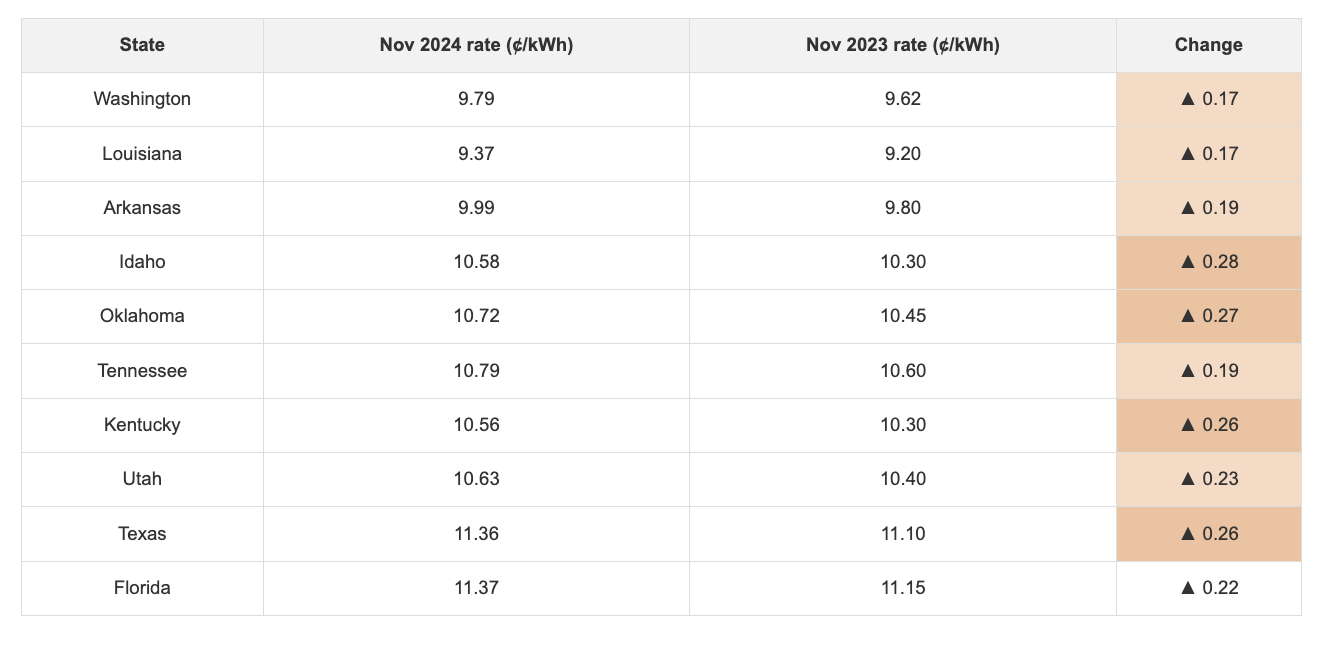
Arbor
How Much Energy Can I Expect to Use in November?
Table showing smallest change in rates since last year.
As temperatures drop, household energy use changes, especially as people begin to heat their homes more. According to the EIA, the average U.S. residential electricity consumption in November 2023 was approximately 877 kWh. In warmer states like Louisiana and Arizona, usage soared beyond 1,100 kWh, while California and Alaska saw closer to 550 kWh. It’s clear: Colder temps don’t always equal higher bills if the local climate keeps demand low.
Here’s a closer look at typical usage patterns in Massachusetts to better anticipate energy needs.
Looking Ahead: December And January
With more demand comes higher prices. Expect rates to edge up in December and January as people crank up the heat. In January, average household energy use will likely exceed 1,250 kWh in the coldest states. Meanwhile, in high-cost states, prices could hit jaw-dropping levels—California could near 34 cents per kWh. But those in a lower-cost state are probably looking at under 12.5 cents per kWh, making winter bills less brutal (but still higher than right now).
Projected High- and Low-Cost States for January:
- Highest: Hawaii (44 cents), California (33.8 cents), Massachusetts (29.75 cents), Connecticut (28.8 cents), Alaska (26.5 cents)
- Lowest: Louisiana (12.1 cents), Washington (12.05 cents), Idaho (12.3 cents), North Dakota (13.05 cents), Nebraska (12.55 cents)
Estimating Your Winter Power Bill
Wondering what your bill will look like? Here’s a quick formula:
- Monthly Bill = Average Usage (kWh) × Rate (¢/kWh) ÷ 100
If you’re in a high-cost state with heavy usage, you could be facing a bill over $500. Knowing your rate and keeping an eye on usage can help.
Where You Can Save This Winter
Deregulated energy markets offer a unique opportunity to reduce winter bills by locking in lower rates. These supply rates are available through third-party providers and vary by region. Here’s an overview of some of the third-party fixed rates available and how to save based on location:
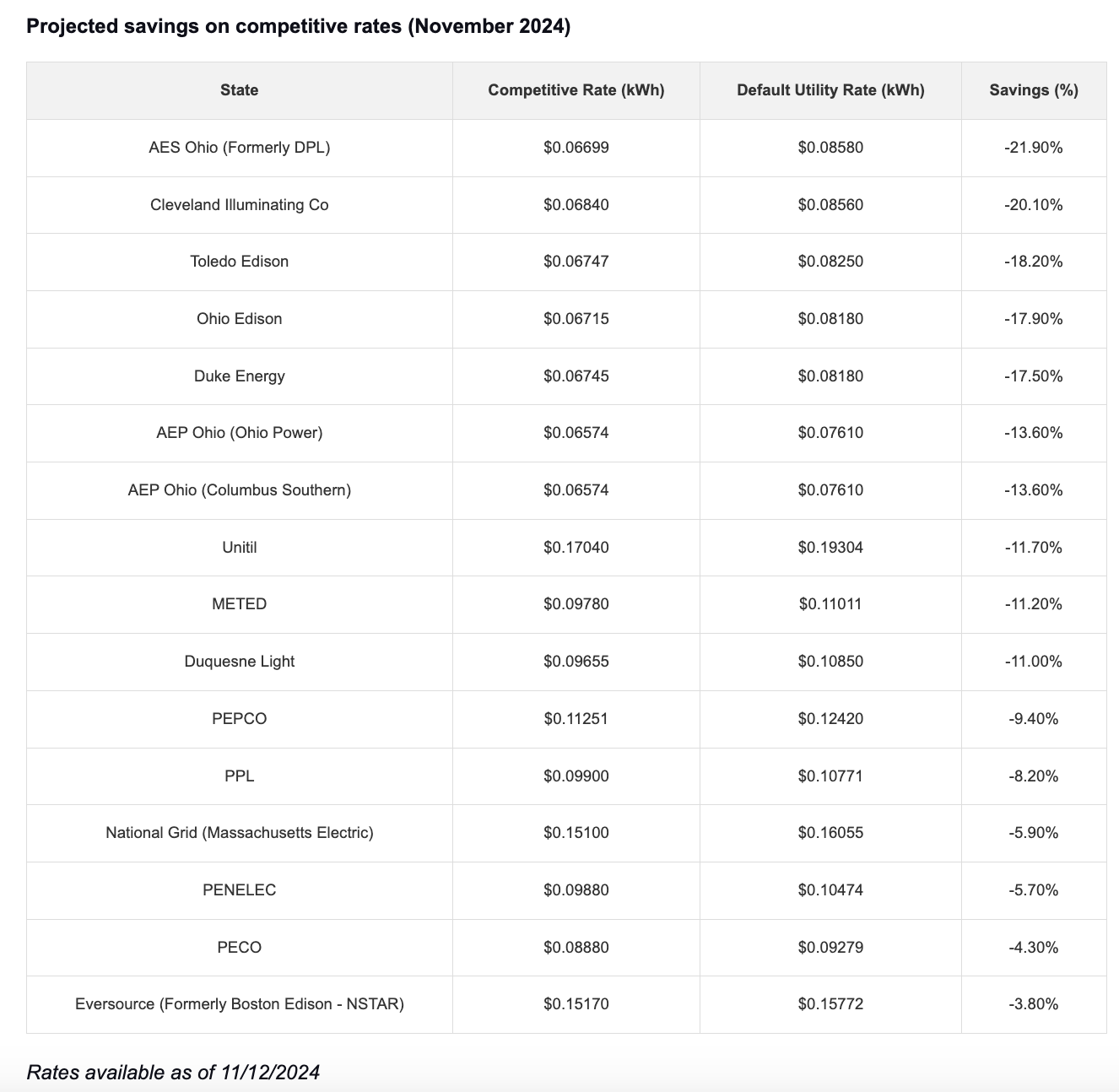
Arbor
Tips to Manage Winter’s Costly Energy Spike
Table showing Projected savings on competitive rates (November 2024).
This winter could see one of the highest seasonal spikes in energy costs in recent years, making preparation key. Securing a competitive rate, managing heating efficiency, and monitoring monthly usage can help households balance comfort with affordability. With prices and usage anticipated to remain high into February, a proactive approach will be crucial for managing energy costs through the colder months.
This story was produced by Arbor and reviewed and distributed by Stacker.